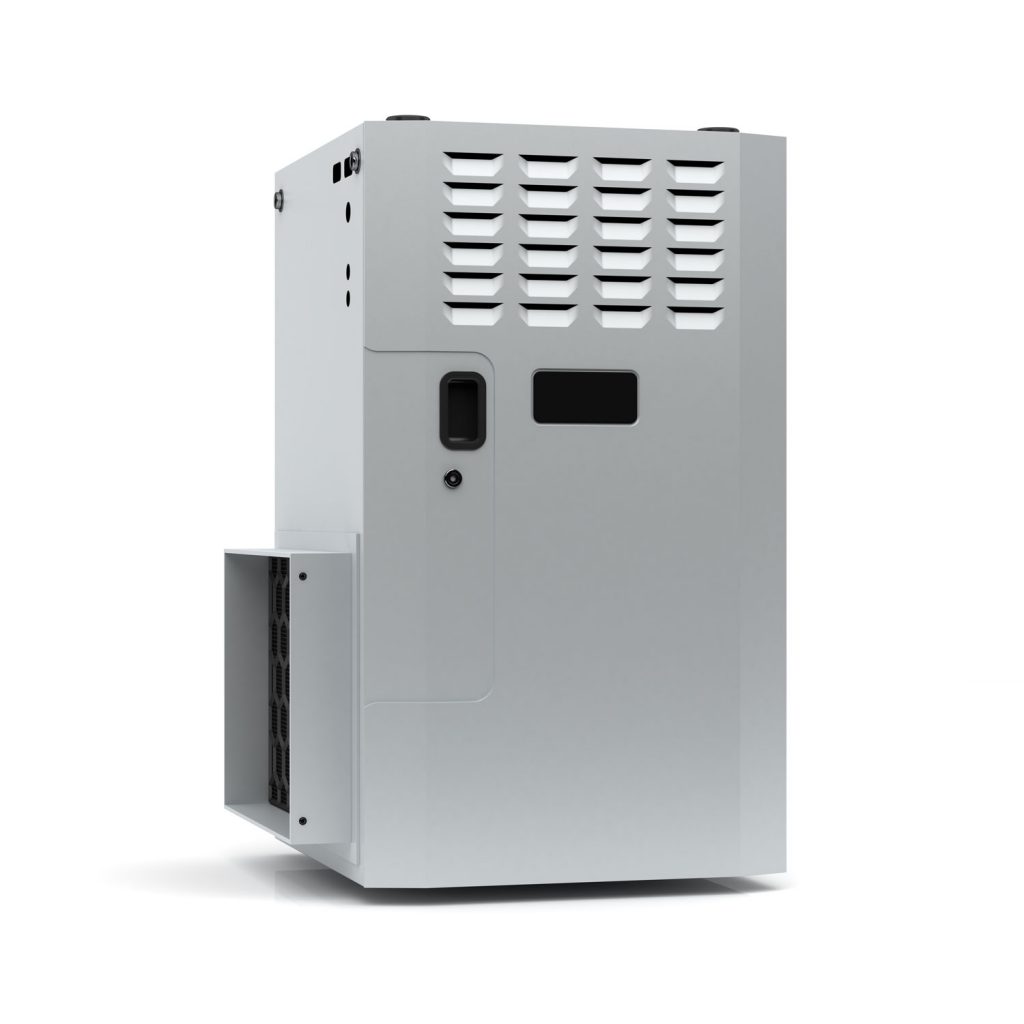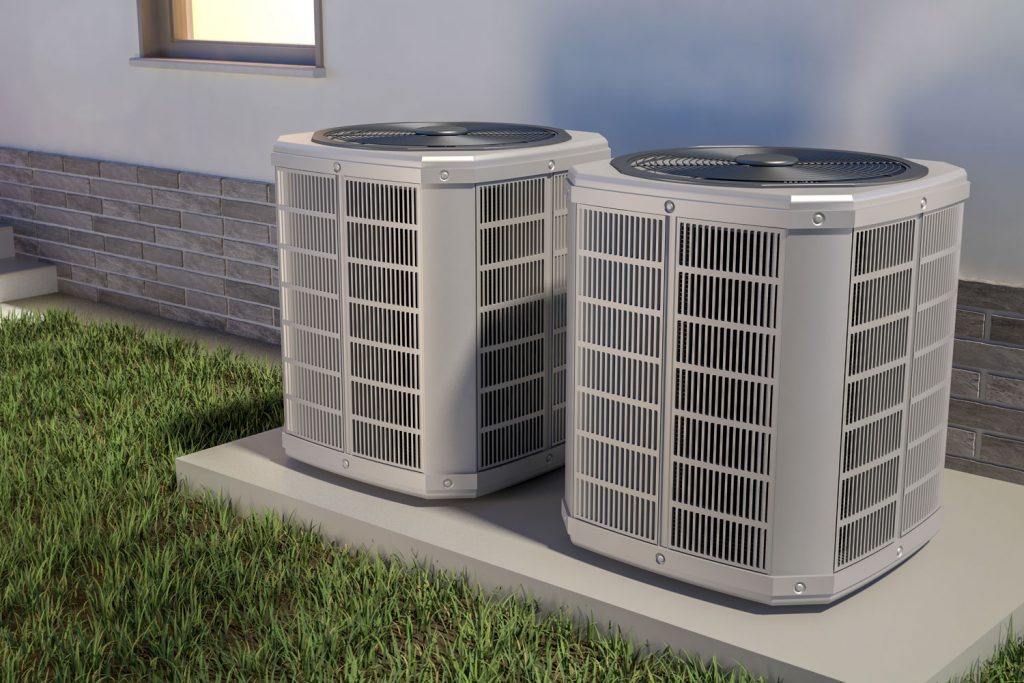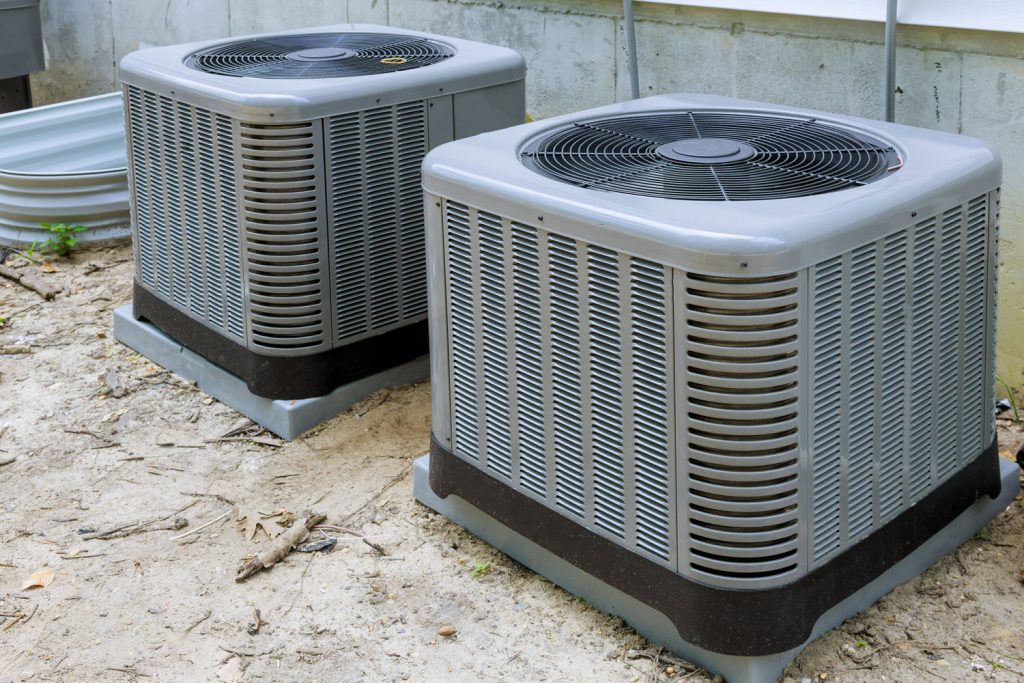You may have never thought about how a home air circulation system works. But now you want to understand which HVAC equipment is the most suitable for cooling or heating your home. If you've wondered whether a heat pump can replace a furnace, you've found the right place! We have researched on your behalf and provided the following information that will help you make a sound judgment for your home's needs.
Yes, you can replace a furnace with a heat pump. However it is dependent on one or more of the following factors below:
- Furnaces generate heat, but heat pumps don't
- Furnaces are more efficient in cold climates
- Heat pumps are noisy
- Furnaces require more space
- Heat pumps can be dual
- Operation costs for heat pumps are lower
- Heat pumps are cheaper to install
Each type of equipment plays a vital role in keeping your home cool or warm. Keep reading to find when you can substitute a furnace with a heat pump, how each system functions, their differences, and the pros and cons of each.
![Two heating system for a furnace, Can A Heat Pump Replace A Furnace? [And How To]](https://hvacseer.com/wp-content/uploads/2021/12/Can-A-Heat-Pump-Replace-A-Furnace-And-How-To-2-683x1024.png)
What's The Difference Between A Furnace And A Heat Pump?
Let's have a look at how each piece of equipment works and their differences to establish at what point you need to replace a furnace with a heat pump.
Furnaces Generate Heat But Heat Pumps Don't
A furnace burns fuel such as gas or propane to generate heat. If the furnace is electric, it produces heat just like a hairdryer does. It pulls in the air and transfers it to the heat exchanger, and then the heat elements heat the air and push out the hot air.
A heat pump, on the other hand, works by drawing in heat from outdoors even when it is cold and transfers the heat to your home. So, a heat pump does not generate heat but rather absorbs it and then releases it into your home.
In Cold Climates Furnaces Function Better
Heat pumps work well in cold climates but only up to 30 degrees Fahrenheit. Once the temperatures drop below this, they become inefficient and are unable to produce adequate heat to warm a home.
A furnace will work well despite the temperatures dropping very low. The only exception to this rule is geothermal heat pumps can transfer heat from under the ground even when the air temperature outside drops below 30 degrees Fahrenheit. This is because the ground temperatures up to six feet below remain stable at between 45 and 58 degrees Fahrenheit.
Heat Pumps Are Noisy
Both the furnace and heat pump produce a lot of noise when experiencing mechanical issues. However, the heat pump is the noisier of the two when both are operating normally. A heat pump will produce clicking and knocking sounds when the compressor powers up or shuts down.
Furnaces are usually located far from the living room, like in the basement, and produce only soft whooshing sounds.
Furnaces Require More Space

A furnace should have at least a 30-inch clearance all around it because if the walls are too close to the furnace, it can heat up to dangerous levels. Besides, professional workers need easy access for maintenance and repairs.
Contrarily, a heat pump located outside needs at least a 24-inch clearance around it. Thus any plants or debris around it should be cleared away, as it requires a lot of air to transfer heat from the outside and into your home. Sometimes, it is mounted high above the ground to protect it from snow or rainwater.
Heat Pumps Can Be Dual
A furnace is designed to heat your home, whereas a heat pump can warm your home during winter and cool it during summer. During warm weather, the heat pump can change to the cooling mode by reversing the flow of the refrigerant through the coils, condensing it to produce cool air -a feature not found in a furnace.
Operation Costs For Heat Pumps Are Lower
A furnace uses a lot of fuel to generate heat. For a heat pump, only enough electricity is needed to circulate the refrigerant to produce cool or warm air. Therefore, a heat pump uses less energy translating to lower operating costs than that in a furnace.
Heat Pumps Are Cheaper To Install
Installing a furnace is at an average cost of $4,500, though it can cost more for a higher efficiency model, while an electric furnace can cost around $4,000. The most common air-to-air heat pump costs between $3,500 and $4,000 to install, depending on its efficiency and size.
The cost for a geothermal heat pump can be astronomically high, ranging between $12,000 and $30,000 due to the underground refrigerant lines that are installed.
What Are The Disadvantages Of A Heat Pump?
As explained above, some of the benefits of using a heat pump over a furnace are:
- lower installation and operational costs
- requires less space
- used for both cooling and heating.
On the other hand, a furnace functions very well in cold climates and is less noisy.
Heat pumps are becoming popular because of their dual functionality. However, before you purchase one, it would be a good idea to understand the pros and cons so that you can make a sound decision as illustrated in the table below.
| Pros | Cons |
| Running costs are low | It’s efficiency in very cold temperatures diminishes |
| Low operation costs | The initial installation costs can be expensive |
| It’s safer than most other combustible systems | May require extra maintenance to keep it at maximum efficiency |
| Can heat during winter and cool during summer | An indoor and outdoor component are required |
| Can last up to 50 years |
If you want to retain your furnace or add it in your home, it would also be good to understand the pros and cons as shown in the table below:
| Pros | Cons |
| Generally cost-effective to operate, though a natural gas furnace is cheaper to run than an electric one | Both electric and gas furnaces have lower life spans of up to 30 years |
| Can heat a home faster than most electric models | A gas furnace can only work where there is a gas line |
| It’s versatile as you can pair it together with a heat pump | Electric furnaces are more expensive to operate in the long run |
| Electric furnaces have low upfront costs | Electric furnaces can dry out the air in your home |
| No venting needed for electric furnaces like their gas counterparts | |
| Electric furnaces have relatively low maintenance costs |
At What Temperature Do Heat Pumps Become Ineffective?

Provided the temperatures outside are above 40 degrees Fahrenheit, it will function at its maximum. But as the temperatures begin to drop to 30 degrees Fahrenheit and below, they begin to lose their efficiency.
This happens because there isn’t much heat energy outdoors that the pump can use to heat a home.
How Much Does It Cost To Replace A Furnace With A Heat Pump?
As earlier explained, an air-source heat pump is cheaper than a geothermal heat pump and the installation costs vary depending on the type and size you need.
The costs of installing a heat pump in a new home may increase because you must have a backup heating plan. In such a scenario, it is crucial to buy both a heat pump and a furnace. Thus you will be spending on two pieces of equipment and not just one.
If you already have a furnace, then you will be thinking of retrofitting. This might be relatively cheaper because you will only need to install an extra piece of heating equipment.
Typically the costs for installing an air-source heat pump range around $5,000, while a geothermal unit installation would cost between $6,000 and $40,000.
Labor costs depend on the region you live in, the professional contractor you select, and the time the job takes to complete and can range between $100 and $150 per hour.
In Closing

Deciding to either install a furnace or heat pump, or both depends on several factors.
Understanding how each functions is the first step, followed by knowing their differences. This gives you a much clearer picture to help you make a credible decision. For an overall view, before settling for either a heat pump or furnace, it is paramount to know the pros and cons of each.
Finally, it is crucial to know the cost for the appliances and installation, not forgetting the labor costs.
Have a look at our previous posts to know when and how to switch on the emergency heat on your heat pump, and how to clean the vents in your furnace:
How To Use Emergency Heat On Heat Pump
